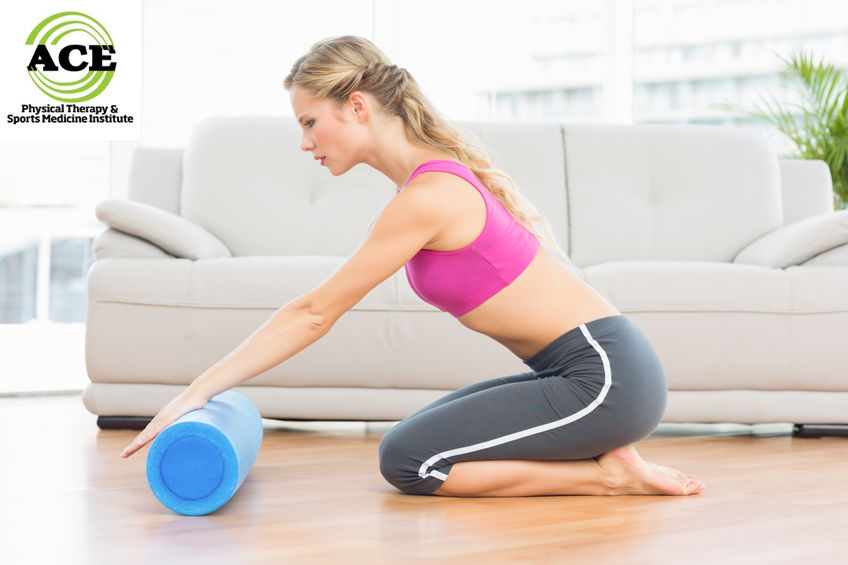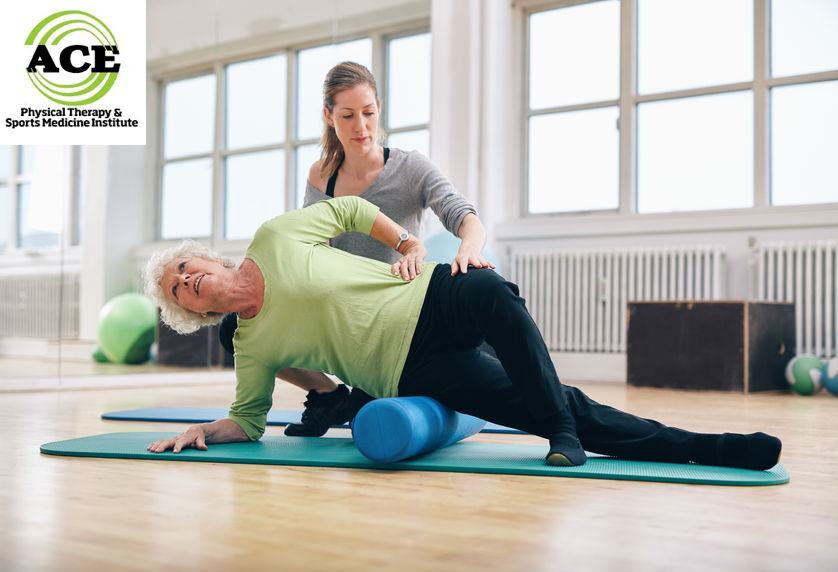USING FOAM ROLLERS IN PHYSICAL THERAPY
Using Foam Rollers In Physical Therapy
by ACE Physical Therapy and Sports Medicine Institute
Tid Bits of Info.
- Foam rollers come in various diameters, lengths and firmness.
- Some foam rollers stimulate the nervous system via little round projections.
- Foam rollers can stretch the fascia.
- Foam roller use should be done slowly and methodically.
- Seek advice and treatment from a Physical Therapist, and you don’t have to go to your doctor first.
Over the last few years, Physical Therapists have begun introducing a variety of exercises that utilize Foam Rollers to reduce pain and improve flexibility. Once learned, these exercises can be used on a daily basis to improve flexibility and circulation while massaging sore and tired muscles and reducing stress associated with inflammation, scar tissue and joints.
Once used by dancers and elite athletes, foam rollers have grown in popularity at local gyms, rehabilitation settings and even at home. The actual foam cylinders vary in length, diameter and hardness. Patients and athletes can use foam rollers to exercise nearly every body part. In fact, they are proving to be more effective than traditional static stretching.
While they can be used for many aspects of a rehabilitation or exercise routine, foam rollers are commonly used after a workout with the primary goal of gaining range of motion in a particular muscle mass or joint or to help reduce the muscle pain associated with a vigorous workout. The person using a foam roller uses their body weight and applies direct pressure to the given muscle mass. The person is able to adjust the pressure and rolling motion provides a massaging action as well as a neuromuscular stimulus.
Foam rollers can help reduce muscle pain. Arising from various sources, muscle pain can be due to trigger points which are areas of the muscle that have been injured. In theory, the inner most contractile fibers (Actin and Myosin) are “locked” together and are not able to release due to damage to the Sarcomplasmic Reticulm (SR), which is responsible for the up-take of calcium. The calcium ion is essential for the contraction to occur, but if it is not re-absorbed it does not allow the fibers to “un-lock” causing a “trigger point” to form. The use of the foam roller helps to massage the trigger point area and enhances blood flow into the injured muscle tissue which helps to “heal” the SR.
Muscles that are exercised aggressively are subject to micro damage that leads to pain. The pain that develops following a vigorous exercise routine is a result of swelling of the individual muscle cells. This is referred to D.O.M.S. or delayed onset muscle soreness. The cell swells due to the damage and the pressure rises within the cell. The foam roller can be used to massage the swollen muscles and helps to reduce the pain. The gentle massage of the damaged muscle tissue helps to stimulate blood flow and “pump –out” the excess fluid that accumulated in the cell.
Most recent research has indicated that the use of a foam roller post exercise greatly enhances range of motion and reduces muscle pain that is associated with aggressive exercise. The foam roller can be used in conjunction with a manual stretching program. There is some concern regarding the use of static stretching and its effect on the strength of the stretched muscle group. There are studies that have shown a reduced capacity to generate force following static stretching, but the foam roller has not been linked to this decrease in force potential. The foam roller can be used at any time during the rehabilitation session and can have a drastic effect on the range of motion of the joints in the “rolled” body part.
Physical Therapists incorporate foam rollers into their treatment protocols to enhance range of motion, massage sore and tired muscles and help stretch tight muscles that can produce poor posture. Scientifically, there is no set number of repetitions or amount of time that is a standard for foam roller use. It is standard practice to have the person perform the foam roller routine daily for several weeks or until their symptoms have resolved. It is believed that a maintenance program of use can help to prevent the symptoms from returning.
Foam rollers are used extensively in many healthcare settings and have grown in popularity due to their effectiveness and ease of use. The person using the roller can perform the routine without additional help. The increase in flexibility and the decrease in muscle pain helps to restore normal function in the involved body part.
Read more articles on our main website blog at: ACE-pt.org/blog
Vist our main website at www.ACE-pt.org


